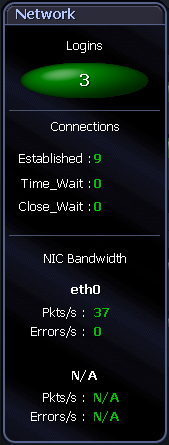Network Panel
|
|
|
The Network panel shows the logins, connections and movement of data on the Unix system: Logins The number of users currently logged on to the machine. Connections The number of external programs with which the machine is currently communicating. The types of connections shown are:
NIC Bandwidth The rate at which data is moving through the NICs (network interface cards).
Data flows between the Network panel and CPU panel
|

